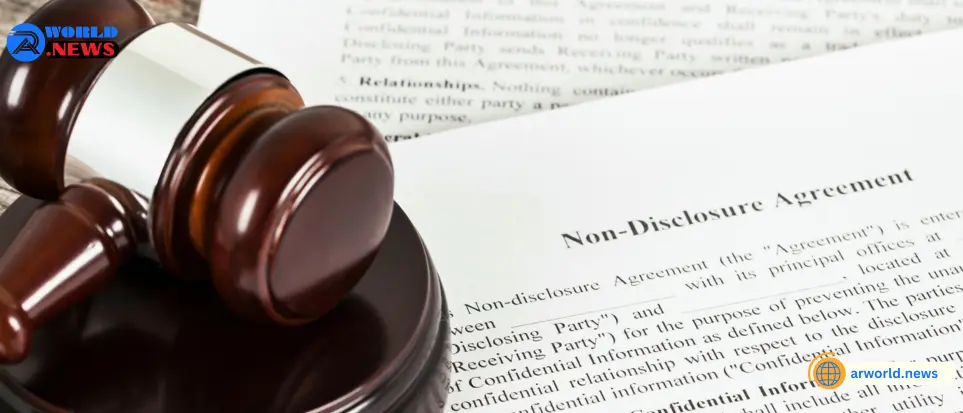MIT Study Shows Why Laws Are Constructed In An Unintelligible Way
Even lawyers struggle to grasp legal paperwork. This raises the question of why these materials are prepared in such an opaque format.
MIT cognitive scientists believe they have found an answer to that issue. They argue that, just as “magic spells” use peculiar rhymes and antiquated phrases to communicate their power, legalese’s complicated vocabulary conveys a sense of authority.
In a study published this week in the journal Proceedings of the National Academy of Sciences, researchers discovered that even non-lawyers utilize this style of language when asked to write legislation.
“People seem to understand that there’s an implicit rule that this is how laws should sound, and they write them that way,” says Edward Gibson, an MIT professor of brain and cognitive sciences and the study’s senior author.
The study’s principal author is Eric Martinez, PhD ’24. Francis Mollica, a lecturer at the University of Melbourne, also contributed to the study.
Cast a legitimate spell
Gibson’s research group has been exploring the specific properties of legalese since 2020, when Martinez joined MIT after graduating from Harvard Law School. In a 2022 study, Gibson, Martinez, and Mollica examined about 3.5 million words of legal contracts and compared them to other genres of writing such as movie scripts, newspaper pieces, and academic papers.
That research indicated that extended definitions are commonly added in the middle of sentences in legal papers, a phenomenon known as “center-embedding.” Linguists have previously discovered that this type of organization can make literature significantly more difficult to interpret.
“Legalese somehow has developed this tendency to put structures inside other structures, in a way which is not typical of human languages,” according to Gibson.
In a subsequent study released in 2023, the researchers discovered that legalese made documents more difficult for lawyers to interpret. Lawyers preferred plain English versions of documents, which they evaluated as equally enforceable as traditional legal paperwork.
“Lawyers also find legalese to be unwieldy and complicated,” observes Gibson. “Lawyers don’t like it, laypeople don’t like it, so the point of this current paper was to try and figure out why they write documents this way.”
The researchers proposed a handful of theories regarding why legalese is so common. One was the “copy and edit hypothesis,” which proposes that legal texts start with a simple premise and then add information and meanings to existing sentences, resulting in complicated center-embedded clauses.
“We thought it was plausible that you would start with a simple initial draft and then later consider all of the other conditions that you want to include.” And the notion is that once you’ve started, it’ll be much easier to integrate it into the current provision,” adds Martinez, who is now a fellow and instructor at the University of Chicago Law School.
However, the findings ultimately pointed to a different idea, known as the “magic spell hypothesis.” According to the researchers, the complicated form of legal language appears to signify a specific kind of authority, similar to how magic spells are written in a distinct style that distinguishes them from ordinary English.
“In English culture, if you want to write a magic spell, people know that the method to do so is to use a lot of old-fashioned rhymes. “We believe center-embedding is signaling legalese in the same way,” Gibson explains.l.
In this study, the researchers asked approximately 200 non-lawyers (native English speakers living in the United States who were recruited using a crowdsourcing site called Prolific) to compose two sorts of writings. The first duty required participants to design rules outlawing crimes including drunk driving, burglary, arson, and drug trafficking. In the second exercise, participants were instructed to compose stories about the crimes.
To test the copy and edit hypothesis, half of the participants were invited to provide extra material after writing their initial law or story. The researchers discovered that all of the participants drafted laws with center-embedded provisions, whether they wrote the legislation all at once or were instructed to write a draft and then add to it later. And when students wrote stories about those laws, they used far simpler English, regardless of whether they needed to add material afterward.
“When making laws, they used a lot of center-embedding whether they had to modify it or write it from scratch. Martinez adds that they did not apply center-embedding in either case in the narrative text.
In another set of trials, approximately 80 volunteers were instructed to draft laws as well as summaries of those laws for visitors from different countries. Participants in these tests employed center-embedding for their laws, but not for their descriptions.
The Origins of Legalese
Gibson’s laboratory is currently exploring the origins of center-embedding in legal texts. Because early American laws were founded on British law, the researchers intend to examine British laws to discover if they use similar grammatical constructions. Going back even further, they intend to investigate whether center-embedding may be discovered in the Hammurabi Code, the earliest known body of rules, which dates from around 1750 BC.
“There may be just a stylistic way of writing from back then, and if it was seen as successful, people would use that style in other languages,” according to Gibson. “I would guess that it’s an accidental property of how the laws were written the first time, but we don’t know that yet.”
The researchers believe that their findings, which identify specific characteristics of legal language that make it difficult to understand, would encourage policymakers to try to make laws more understandable. Efforts to produce legal papers in plainer language go back at least to the 1970s, when President Richard Nixon declared that federal regulations should be written in “layman’s terms.” However, there has been minimal change in legal wording since then.
“We have learned only very recently what it is that makes legal language so complicated, and therefore I am optimistic about being able to change it,” Gibson tells me.




